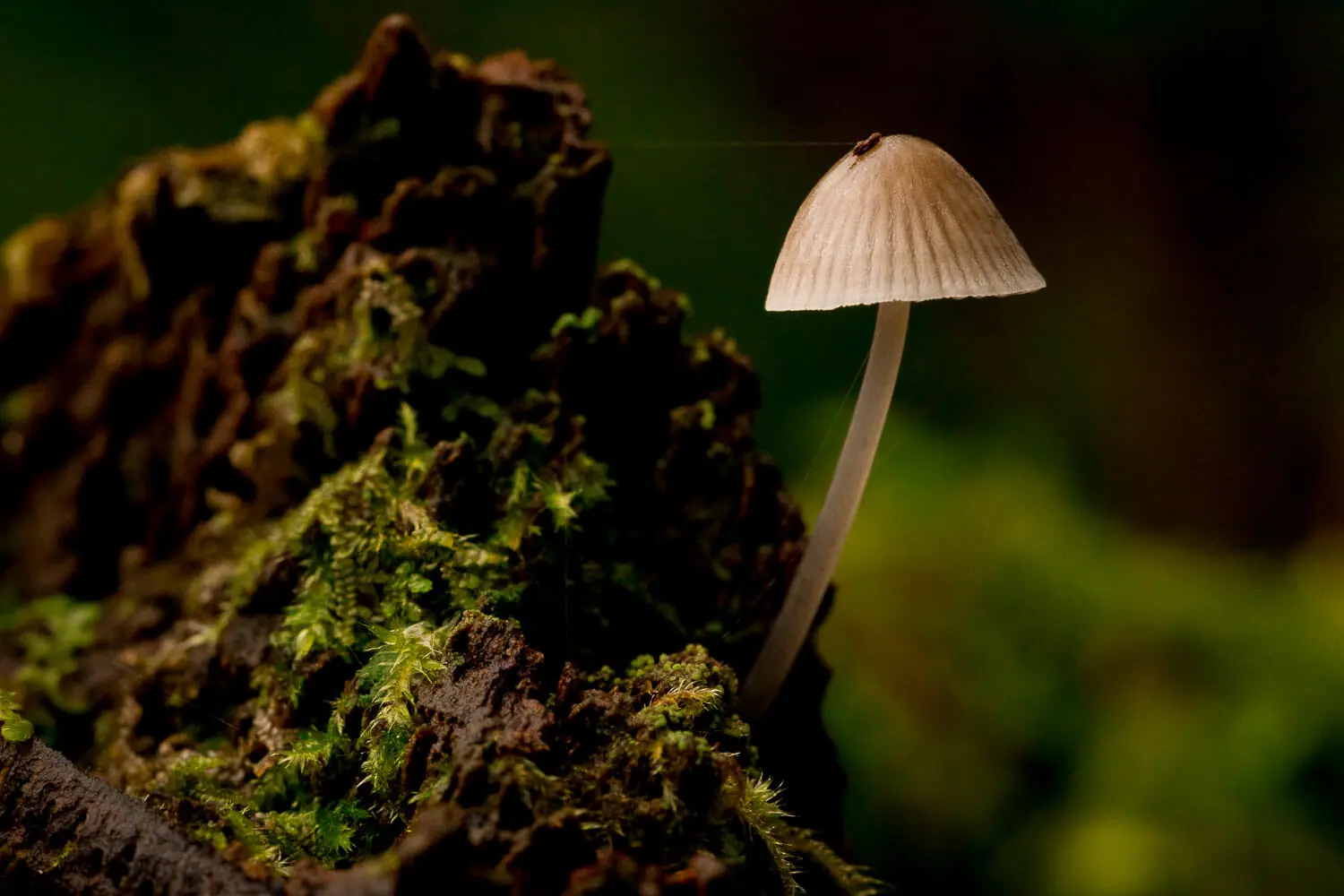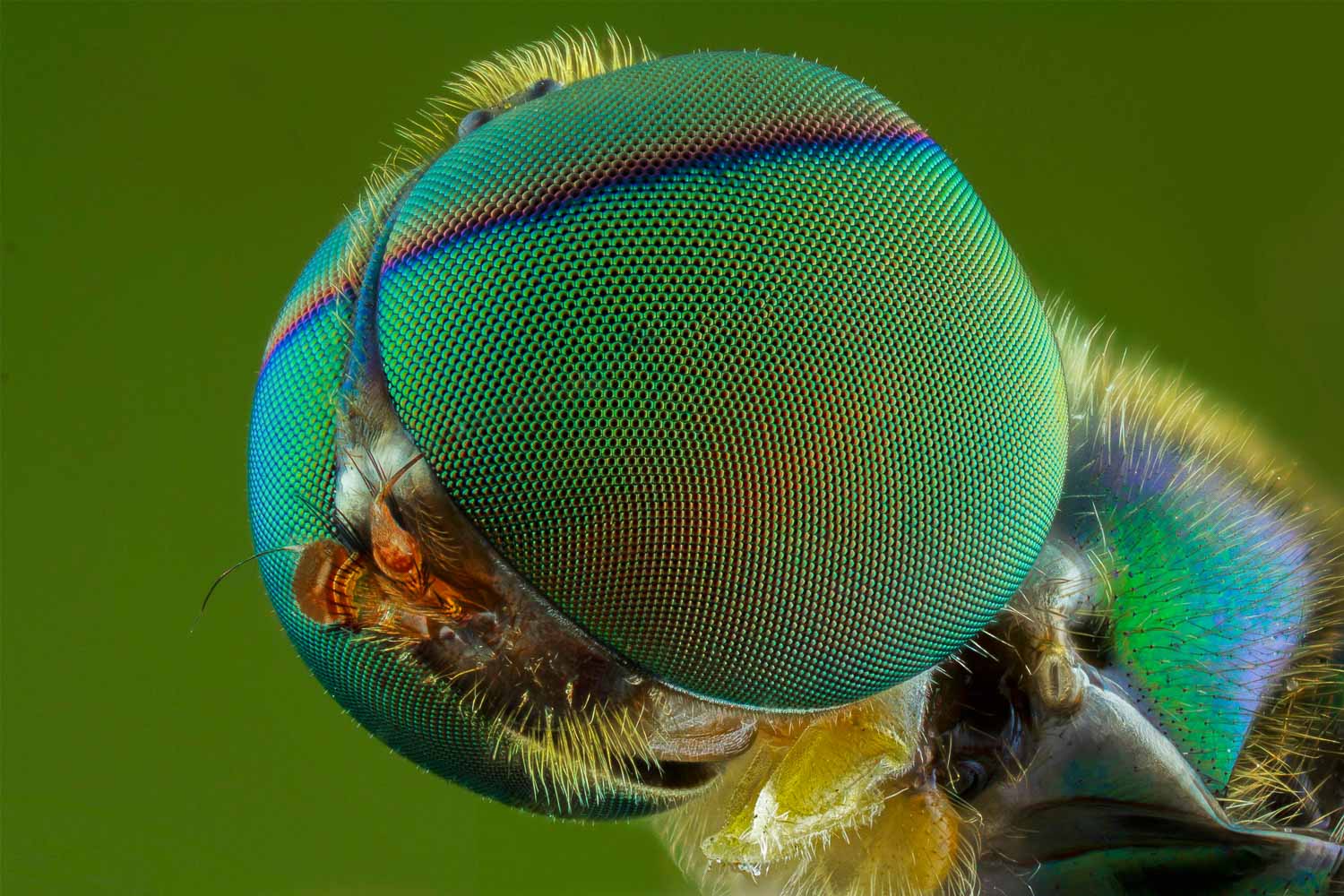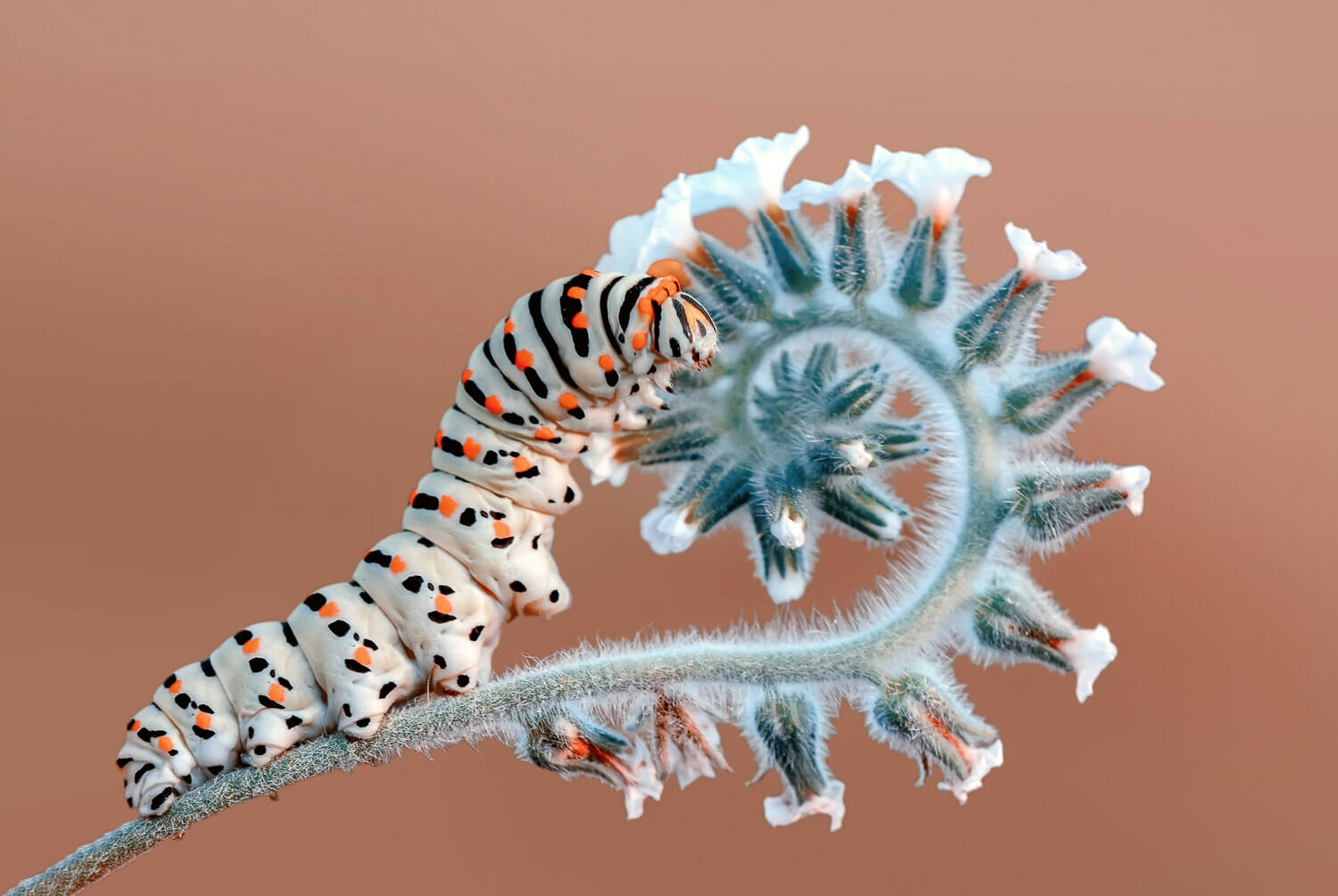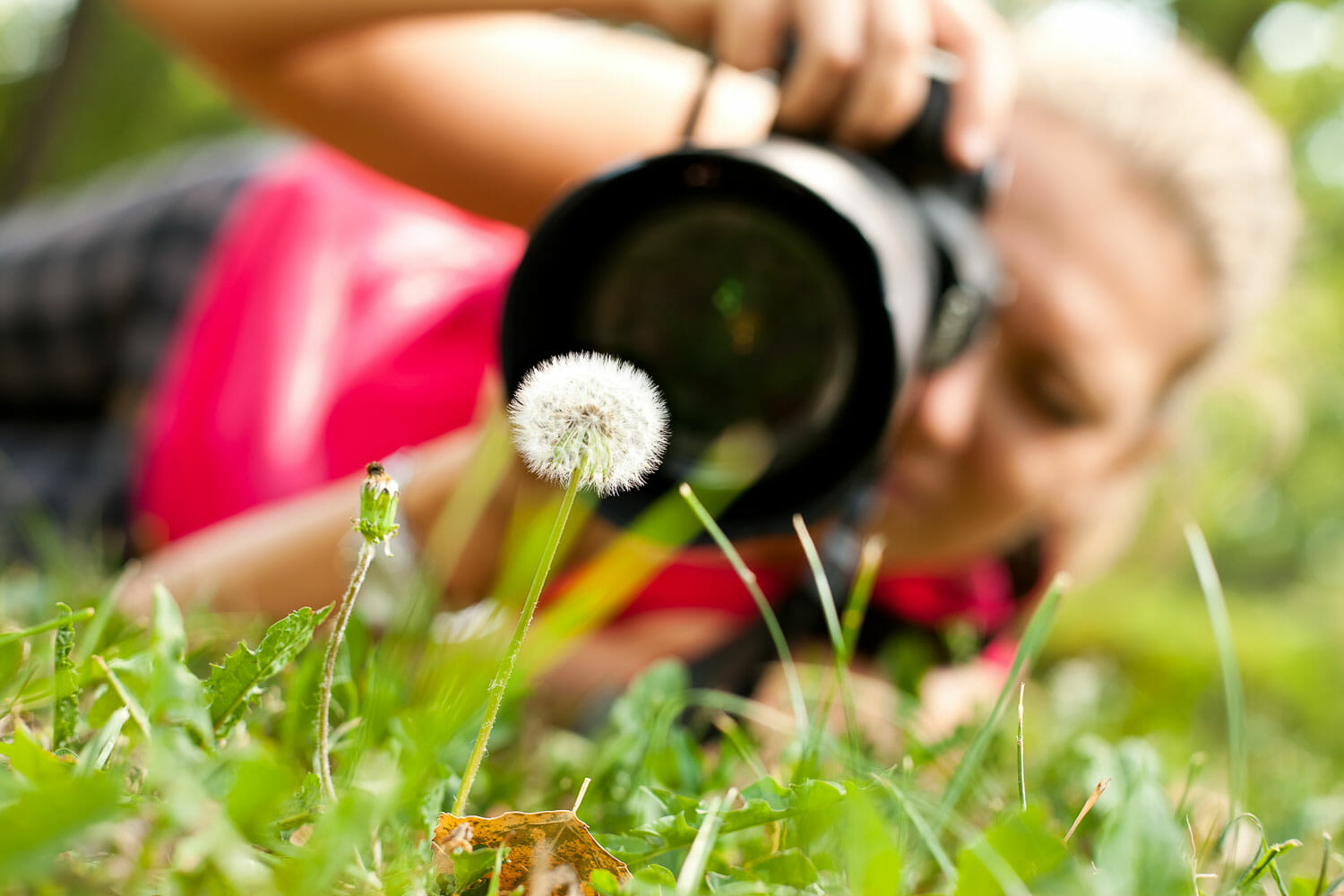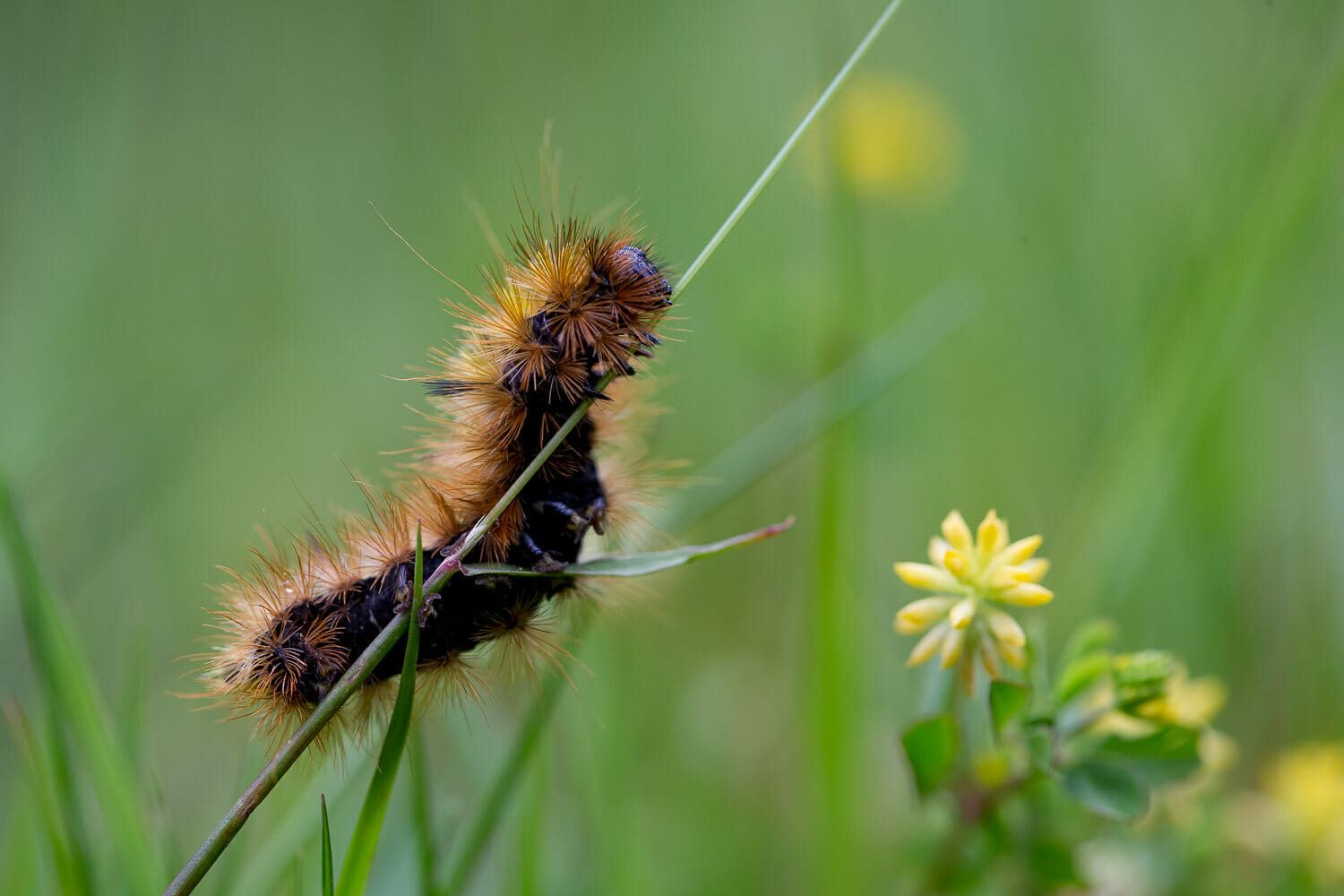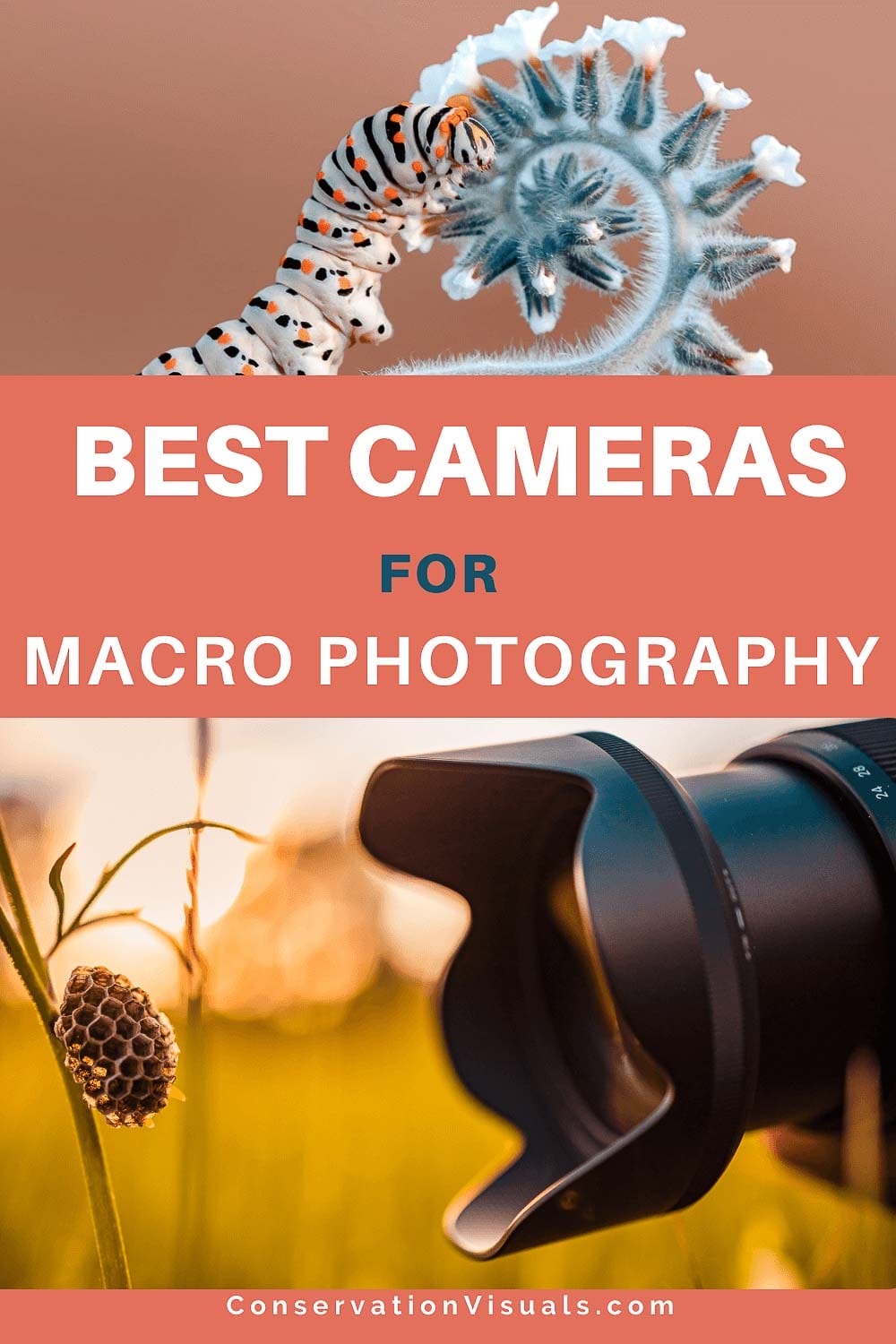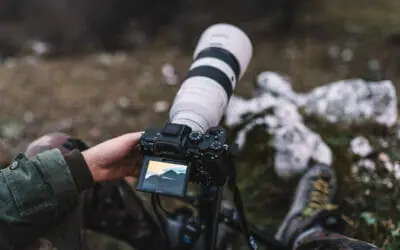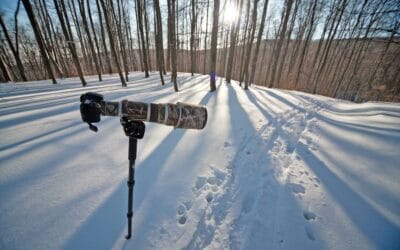The right gear can be the difference between a good shot and an extraordinary one. So it's no wonder you're searching for the just-right camera for macro photography to get your perfect close-ups.
The good news is that essentially any camera can be a camera for macro photography, from simple point and shoot cameras with a dedicated macro mode to more complex digital cameras that use interchangeable lenses.
Indeed, even camera phones like iPhones or Androids can create impressive shots with a clip-on macro attachment.
That's because the lens is usually what makes the macro shot so fantastic.
However, the camera itself is still a major part of the equation, with important features to consider.
Is culling through the best cameras for macro an overwhelming task? Maybe! But don't worry, we're here to help identify not just the best cameras for macro photography but the right macro camera for you.
As fellow nature enthusiasts and macro photography aficionados, we're here to sift through the features and options to find your perfect close-up photography companion (while attempting to make as few as possible “up close and personal” jokes along the way.)
Photo: Jaymi Heimbuch
Macro camera features to consider
When it comes to cameras for macro photography, technically, any camera that you can get up close and focus with can be used for macro shooting.
While that's true, we're guessing you're here because you're looking for a camera that will help you shoot the best of the best, the creme de la creme, of macro photos! Or, at least, a great camera at a decent price that'll help you capture the shots of your wildest “Honey, I Shrunk the Kids” dreams.
As you research cameras for macro photography, you'll hear over and over that the lens is the most important component. We don't disagree! But, without a camera, you're going to have a tough time using a lens.
So, first things first, you'll need the best macro photography camera for you.
Here are a few key elements that differentiate a good macro camera from other cameras:
1. Camera Body
The best camera for macro photography can come in all types of bodies, from a point and shoot camera to a bridge camera used in macro mode to a more complex DSLR or mirrorless camera system with interchangeable lenses.
While every macro photographer has their preference, our focus here is primarily on the DSLR and mirrorless camera as their more complex systems and lens options provide greater macro opportunities.
Here's an in-depth look at the differences between DSLR and mirrorless cameras >>
The digital single lens reflex (DSLR) – the OG of the digital camera world – and mirrorless cameras each have their unique advantages.
❂ DSLR cameras have been a popular choice among macro photographers for a long time due to their robust build, broad selection of lenses, and generally longer battery life.
They come with an optical viewfinder that allows you to see exactly what the lens is seeing.
❂ Newer mirrorless cameras have gained in popularity due not only their being generally a more compact camera, but also because many manufacturers have transitioned from DSLRs to producing mirrorless models almost exclusively.
This means that the newest and most advanced features are typically found in the latest mirrorless models.
Mirrorless cameras are often equipped with a hybrid autofocus systems that utilize both phase and contrast detection, electronic viewfinders that allow for the preview of exposure in real-time, a faster burst mode, in-body image stabilization (IBIS)
While mirrorless options can have some fairly significant benefits over DSLRs, when it comes to macro cameras, the larger grip and longer battery life of DSLRs is often preferable.
Plus, DSLR lenses, being part of a mature system with a long history, have a vast selection available from lens designers covering almost all types of photography from macro to wildlife.
They tend to be better optimized for their respective camera bodies, offering superior autofocus performance and image quality.
To pick the best camera for macro photography for you, give some serious though to the type of macro photos you want to shoot and how you want to shoot them.
Photo: Tomatito/Shutterstock
2. Sensor Size
When it comes to macro photography, each sensor type presents its own advantages and disadvantages. While our immediate gut instinct might be to go with a larger sensor, there are benefits to the APS-C and micro four-thirds sensors found in more compact cameras.
❂ Full-frame sensors deliver great image quality, especially for low light photography, due to their larger pixels that can capture more light.
This results in less noise and more detail, which is ideal when capturing the intricacies of macro subjects.
With a crop factor of 1, the focal length of the lens gives you the true larger field of view as well as a broader dynamic range.
That being said, their larger field of view can make it more challenging to fill the frame with a small subject. So depending on your macro photography goals, bigger isn't always better.
❂ APS-C sensors, or ‘Advanced Photo System type-C' sensors, are smaller than full-frame sensors, typically around two-thirds of the size.
Their crop factor of 1.5x or 1.6x artificially extends the reach of your lens, making it easier to fill the frame with your subject without having to get extremely close.
This crop factor effectively multiplies the focal length of the lens, making APS-C cameras more suitable for shooting distant subjects because it provides more “reach.”
However, their smaller size can lead to less detail and more noise than full-frame sensors, especially in low light.
❂ Micro Four-Thirds sensors are even smaller than APS-C sensors, and roughly half the size of a full-frame sensor. Due to their 2x crop factor, they are capable of providing even more reach than APS-C sensors.
Their increased depth of field can also be beneficial when shooting macro, as it allows for more of the subject to be in focus. But in can also be a disadvantage, as it may require smaller apertures to achieve the same level of background blur as larger sensors, which can lead to diffraction and loss of sharpness.
Plus, their smaller size can result in less detail and more noise.
All-in-all, the best sensor for macro photography will depend on the specific needs and preferences of the photographer, the lighting conditions, and the size and nature of the subjects photographed.
Photo: SemilirBanyu/Shutterstock
3. Resolution
Image quality is largely determined by not just by sensor size, but also by resolution.
Higher resolution cameras, boasting more megapixels, are capable of capturing intricate details, giving photographers the power to reveal the subtle textures and patterns of their tiny subjects.
This level of detail can be particularly useful when cropping images in post-production, ensuring that even zoomed-in sections of the photo retain their sharpness and clarity.
Keep in mind though, the benefits of high-resolution cameras go hand in hand with the use of high-quality lenses.
Without the right lens, even a camera with the highest resolution may fail to produce the detail-packed macro shots you're looking for.
4. Image Stabilization
Optical image stabilization helps reduce the blurring associated with the motion of a camera during exposure.
When even a small amount of movement can ruin a macro shot, it's one thing to photograph moving subjects, and another thing all together to to deal with a camera that's not perfectly still.
In-body image stabilization (IBIS), where the camera's sensor moves to counteract camera shake, can be crucial in maintaining sharpness, especially when photographing without a tripod.
Plus, it allows you to shoot at slower shutter speeds, providing more flexibility in your settings.
However, while IBIS is beneficial, it's not a complete solution for eliminating camera shake.
It can't compensate for larger movements and may be less effective as magnification increases.
This is where lens-based image stabilization comes into play, which can be more effective for higher magnification shots. Ideally, you'll want both.
Photo: Marty Pitcairn/Shutterstock
4. Frame Rate
Frame rate (the speed at which individual still frames are captured) can play a significant role when, say, you're photographing a fast-moving insect or attempting to capture the perfect moment when a drop of dew falls from a flower petal.
In these cases, a higher frame rate can increase your chances of getting that perfect shot.
Most standard DSLR and mirrorless cameras offer a burst mode, enabling you to take several frames per second.
But remember, while a high frame rate can be beneficial, it's not an absolute necessity.
Macro photography is as much about patience and timing. In many cases, a keen eye and a quick finger can be just as effective as a high frame rate.
Plus, a high frame rate can fill up your memory card quickly and require more processing power.
5. Focus System
Given the minute details and textures inherent in macro subjects, an autofocus system that focuses quickly and accurately can be the difference between a perfectly sharp image and a blurry missed opportunity.
Macro photography often involves close-up shots where the depth of field is shallow, meaning that even a slight miscalculation in focus can result in part of the subject being blurred.
Some cameras offer sophisticated autofocus systems with features like eye-autofocus (ideal for macro photographers focused on insect photography) or the ability to switch to manual focus or utilize focus peaking for precise control over the focal plane.
Photo: AnnaC17/Shutterstock
6. Monitor
In addition to wanting a large, high-resolution monitor that allows you to see the finer details and textures crucial when focusing on small subjects, also consider a camera with an articulating monitor that provides flexibility during shooting that's often done on the ground and in awkward positions.
7. Weight
In handheld macro shooting where precision and patience are paramount, a lighter weight camera with an ergonomic design can make a significant difference. Adjusting settings swiftly, shooting from tough angles, or holding the camera steady for extended periods becomes substantially easier with a well-designed camera.
8. Available Lenses
Choosing a camera with a range of compatible macro lens options (not only native, but also third party lenses) is key. Macro lenses are not known to be cheap, so you'll want a variety to choose from that fit not only your camera, but also your budget.
A camera compatible with a variety of macro lenses provides greater flexibility and the potential for more diverse and detailed images. Also consider the range of focal lengths available, as they affect the working distance between the camera and the subject, influencing both the perspective of the image and the ease of capturing your subject.
Photo: Tran The Ngoc/Shutterstock
How we picked the best cameras for macro photography
We at Conservation Visual Storytellers Academy have extensive experience in nature and wildlife photography. Our writers and editors use the major camera systems available and draw on our decades of experience in the field to test cameras.
To choose the best recommendations for you, we combine personal experience, insights from fellow pros and industry experts, editorial and user reviews, and details from manufacturers. We carefully weigh the pros and cons of each item and put only what we feel is the best selection available into our recommendation guides.
We've curated a selection of camera bodies to meet the needs of different macro photography goals and budgets. Factors we consider include camera weight, resolution, autofocus, image stabilization, ISO sensitivity, and more to help you have the best macro photography experience. We also included a mix of entry-level and professional camera bodies and a variety of camera manufacturers.
For advice on what to consider in a camera for macro photography and how to choose the right camera body for you, use the table of contents to jump to those sections.
Best Cameras for Macro Photography: Our Reviews & Recommendations
Nikon D850
Efficient and versatile, the Nikon D850 is considered by many macro photographers to be the best full-frame DSLR on the market
- High image quality
- Impressive wide dynamic range
- Silent shooting mode
- Advanced features to support creative macro shooting
- Long battery life
- Dual card slots
- Not the fastest frame rate compared to other cameras at this price point
- Lacks in-body image stabilization (IBIS)
SPECIFICATIONS
- Body Type: DSLR
- Sensor: Full-frame CMOS
- Effective Megapixels: 45.7MP
- Autofocus Points: 153 (99 cross-type)
- Continuous Shooting Burst Rate: 7 fps (9 fps with a grip)
- Image Stabilization: No
- ISO Sensitivity: 64-25,600 (expands to 32-102,400)
- Lens Mount: Nikon F
- Weight: 2.02 lbs (camera body only)
- Price Range: $$$
WHAT WE THINK
The Nikon D850 stands out as an impressive full-frame DSLR, boasting a backside-illuminated CMOS sensor with a superior 45.7MP resolution and extraordinary technical performance.
With it's impressive wide dynamic range of 14.8 stops and ISO expandable to 32, the Nikon D850 can capture a vast range of light and dark details in a single shot.
While it lacks in-body image stabilization (IBIS) and the continuous shooting burst rate and buffer capacity could be a bit higher, the D850 offers impressive features, including uncropped 4K 30p video, an electronic shutter that allows for silent shooting, focus peaking, and a 3.2″ tilting LCD touch screen.
All in all, this is a stand-out camera that easily holds its own.
BEST PRICES
Canon EOS R5
Not only one of the best cameras for macro, the Canon EOS R5 is also one of our favorite cameras for bird and wildlife photography
- Excellent image quality
- High-resolution sensor
- Fast autofocus performance
- Robust image stabilization
- High-speed continuous shooting
- Durable weather-sealed body
- Complex menu system may be overwhelming for novice photographers
- Potential overheating issues when shooting in 8K for extended periods
- Shorter battery life compared to other competitors
SPECIFICATIONS
- Body Type: Mirrorless
- Sensor: Full-frame CMOS
- Effective Megapixels: 45MP
- Autofocus Points: 1,053
- Continuous Shooting Burst Rate: 12 fps (mechanical shutter), 20 fps (electronic shutter)
- Image Stabilization: Yes
- ISO Sensitivity: 100-51,200 (expands to 102,400)
- Lens Mount: Canon RF
- Weight: 1.62 lbs (incl. battery and memory card)
- Price Range: $$
WHAT WE THINK
The Canon EOS R5, with its high-resolution sensor and swift autofocus capabilities, emerges as a top-notch pick for macro photography.
It effortlessly blends a robust image stabilization system and high-speed continuous shooting abilities, making it perfect for capturing detailed close-ups of tiny subjects.
The full-frame CMOS sensor and ISO range bolster its performance under various lighting conditions. Plus, in post-processing, its substantial sensor provides ample room for cropping without compromising on detail.
While its battery life could be better, carrying a few spare batteries or opting for an additional battery grip easily solves the issue.
Overall, it's a high-performing, balanced camera that presents great value for its price, making it suitable for both serious hobbyists and seasoned pros.
BEST PRICES
Olympus Tough TG-6
Waterproof and durable, the Olympus Tough TG-6 is one of the best compact cameras for macro photography
- Tough camera model
- Waterproof up to 50'
- 4K video
- RAW capable
- Four dedicated macro modes
- User-friendly
- Affordable
- Lightweight
- Lower resolution
- Small sensor
SPECIFICATIONS
- Body Type: Point-n-shoot
- Sensor: 1/2.3″ BSI-CMOS
- Resolution: 12MP
- Autofocus Points: 25
- Continuous Shooting Burst Rate: 20 fps
- Image Stabilization: Yes
- ISO Sensitivity: 100-12,800
- Lens Mount: Fixed macro, 25-100mm equivalent
- Weight: 0.56 lbs
- Price Range: $
WHAT WE THINK
Water-proof! Dust-proof! Shock-proof! Crush-proof! Freeze-proof! The Olympus Tough TG-6 is an excellent choice for enthusiasts and underwater photographers who need a sturdy, reliable companion capable of withstanding intense conditions.
It boasts an impressive suite of features, including 4K video, focus bracketing, RAW image capability, and four dedicated macro modes. And, for when you put on your flippers and go under, it has five underwater shooting modes and three underwater white balance modes.
While the small sensor can be a little limiting, especially in low light conditions and the fixed 25-100mm equivalent lens also restricts flexibility, overall, if you want one of the most robust compact cameras, the Olympus Tough TG-6 is the right choice.
BEST PRICES
Nikon Z5
With full-frame quality in a manageable mirrorless package, the Nikon Z5 is the perfect choice for a camera for macro photography
- Full-frame compact camera
- Exceptional image quality
- Ergonomic design
- Two SD slots
- Relatively low burst rate
SPECIFICATIONS
- Body Type: Mirrorless
- Sensor: Full-frame CMOS
- Effective Megapixels: 24.3 MP
- Autofocus Points: 273
- Continuous Shooting Burst Rate: 4.5 fps
- Image Stabilization: Yes
- ISO Sensitivity: 100-51,200
- Lens Mount: Nikon Z
- Weight: 1.31 lbs
- Price Range:$
WHAT WE THINK
The Z5, a compact yet powerful full-frame mirrorless camera, is Nikon’s most lightweight in the Nikon Z system. Known for its outstanding image quality, the Z5's 24.3MP CMOS sensor delivers sharp, lifelike details and vibrant colors.
With an impressive 273-point and eye-detection autofocus system, an expandable ISO range for superb low-light shooting, 5-axis IBIS, and a high-resolution electronic viewfinder, the Nikon Z5 is ideal for macro shooting.
Despite its lower burst rate of 4.5fps for continuous shooting, the Nikon Z5 with its excellent dynamic range, powerful stabilization, and superior high-ISO performance, presents itself as a versatile, all-around camera.
BEST PRICES
Canon EOS Rebel SL3 (EOS 250D)
While it may lack the larger sensor of full frame cameras, the Canon EOS Rebel is an affordable yet powerful DSLR that offers a striking balance of performance and portability, making it a perfect macro camera for beginners.
- Lightweight and compact camera, for a DSLR
- Dual pixel AF with eye detection
- Extensive lens options
- Great for relative newbies
- Long battery life
- Lacks in-body image stabilization (IBIS)
SPECIFICATIONS
- Body Type: DSLR
- Sensor: APS-C CMOS
- Effective Megapixels: 24.1 MP
- Autofocus Points: 9
- Continuous Shooting Burst Rate: 10 (RAW), 37(C-RAW)
- Image Stabilization: No
- ISO Sensitivity: 100-25,600
- Lens Mount: Canon EF
- Weight: 0.89 lbs
- Price Range: $
WHAT WE THINK
The Canon EOS Rebel SL3 (or the EOS 250D in Europe) with its relatively compact and lightweight construction, is perfect for long shooting sessions.
Despite its lack of the larger sensor that full-frame cameras typically boast, it compensates with a robust suite of features perfect for both budding and seasoned photographers.
The camera’s impressive 24.1MP APS-C CMOS sensor and impressive ISO performance deliver outstanding image clarity, while its dual pixel AF with eye detection ensures precise and quick focus on your creature subjects.
The Canon EOS realm offers a broad range of lens options, making it a versatile tool for different shooting styles and conditions. Plus, at this price point, it's fairly affordable path to entering the Canon EOS world.
While we wish it rotated, we really appreciate the 3″ vari-angle LCD touchscreen. We also would love in-body IS, but we don't want to be too greedy!
As long as you opt for macro lenses with their own image stabilization systems, you'll be good to go.
BEST PRICES
Sony a7 III
The Sony a7 III, with its impressive speed and low-light performance, is a solid choice for macro photography
- Affordable option that's comparable to updated model
- Superb at shooting macro in low light
- Impressive autofocus
- Dual memory card slots
- Vari-angle screen would be preferable
SPECIFICATIONS
- Body Type: Mirrorless
- Sensor: Full-Frame Exmor R BSI CMOS Sensor
- Effective Megapixels: 24.2MP
- Autofocus Points: 693 (phase-detection), 425 (contrast)
- Continuous Shooting Burst Rate: 10 fps
- Image Stabilization: Yes
- ISO Sensitivity: 100–51,200 (expandable to 204,800)
- Lens Mount: Sony E
- Weight: 1.43 lbs (incl. battery and memory card)
- Price Range: $$
WHAT WE THINK
Thanks to its superior speed, improved low-light performance, and full-frame 24.2-megapixel Exmor R BSI CMOS sensor the Sony a7 III makes quite the macro mate.
The sensor and BIONZ X image processor make it possible to capture high-resolution stills and UHD 4K video.
Coupled with its impressive 15-stop dynamic range at low sensitivity values, it's perfect for those shooting in varied lighting conditions.
Its Fast Hybrid AF system combining 693 phase-detection points and 425 contrast-detection areas ensures quick autofocus and reliable subject tracking.
A remarkable 5-axis IBIS compensates for five different types of camera shake, allowing the camera to be used handheld without a blur.
The a7 III sports a weather-sealed and robust body design, improved EVF, larger battery, and dual memory card slots.
And while we appreciate the LCD touchscreen, it would be made just a smidge better if it had more movement flexibility. Overall, though, this is a solid macro making machine.
BEST PRICES
Fujifilm X-T5
With its compact design and exceptional imaging performance, the Fujifilm X-T5 stands out as one of the best cameras for macro
- Impressive seven-stop IBIS system
- Lightweight and compact
- RAW capabilities
- Hybrid AF system
- Outstanding shutter speed
- Tilting 3.0" LCD touchscreen
- The build quality is not for everyone
SPECIFICATIONS
- Body Type: Mirrorless
- Sensor: APS-C CMOS
- Effective Megapixels: 40.2MP
- Autofocus Points: 425
- Continuous Shooting Burst Rate: 20 fps
- Image Stabilization: Yes
- ISO Sensitivity: 125-12,800
- Weight: 1.05 lbs
- Price Range: $$
WHAT WE THINK
The Fujifilm X-T5 is a portable yet powerful multimedia mirrorless camera that is equipped with a new 40MP APS-C X-Trans CMOS 5 HR BSI sensor. This camera is not only compact and lightweight but also offers a range of incredible features including a seven-stop IBIS system, Pixel Shift Multi-Shot mode for 160MP files, a 425-point Intelligent Hybrid AF System, and super-fast shutter speeds.
Despite its small size, the X-T5's image processing algorithm makes no compromise on imaging performance and delivers exceptional results across its native ISO range.
It's enhanced with a large OLED electronic viewfinder, a 3.0″ 1.84m-dot LCD touchscreen, and utilizes an NP-W235 battery that allows for up to 680 frames to be recorded from a single charge. Plus, it's equipped with built-in Bluetooth and Wi-Fi connectivity.
All these features make the X-T5 one of the top cameras for macro photography.
BEST PRICES
Panasonic Lumix DMC-LX10
As a compact, point-and-shoot camera, the Panasonic Lumix DMC-LX10 gets you the shots you want with ease of use and an accessible price point
- 3" tilting LCD touchscreen
- Impressive resolution for the size
- Compact and portable
- Feature-filled!
- Limited battery life
SPECIFICATIONS
- Body Type: Compact point-n-shoot
- Sensor: 1″ CMOS
- Effective Megapixels: 20MP
- Autofocus Points: 49
- Continuous Shooting Burst Rate: 50 fps
- Image Stabilization: Yes
- ISO Sensitivity: 125-12,800
- Lens Mount: N/A
- Weight: 0.68 lbs
- Price Range: $
WHAT WE THINK
An impressive lil guy, the Panasonic Lumix DMC-LX10 is designed for photographers on the go. With a 20.1MP High Sensitivity MOS sensor, it captures sharp stills and UHD 4K video.
The sensor, combined with a Leica DC Vario-Summilux f/1.4-2.8 lens, ensures bright, clear macro photos even in low light. This versatile wide-angle to telephoto lens, with a 24-72mm equivalent zoom range, adapts to various situations.
The Lumix DMC-LX10 excels in speed, offering 50 fps shooting with an electronic shutter or 10 fps with a mechanical one.
And with the 5-axis HYBRID O.I.S.+ system, you can capture shake-free images, while the 49-area autofocus system ensures sharp, clear shots.
The camera's UHD 4K video recording capabilities are enhanced by 4K PHOTO and 4K Post Focus features.
Its compact size, ergonomic grip, and a 3″ LCD touchscreen that tilts up 180° makes it comfortable to shoot with. It also features a physical lens control ring for easy, tactile control over settings.
Packed with other notable features like focus stacking, built-in Wi-Fi connectivity, and USB mobile charging, the Panasonic Lumix DMC-LX10 is a highly capable camera that strikes the perfect balance between portability and power.
BEST PRICES
Recommended: Excited for what amazing tiny things you can photograph with your camera? Check out our guide to 25 inspiring macro photo ideas you can create at home.
Photo: Darkdiamond67/Shutterstock
Macro camera settings to use
❂ Aperture
In macro photography, where capturing teensy tiny details is paramount, the choice of aperture can significantly influence the final image.
Larger apertures (low f-stop) allow more light to enter the camera and produce a shallower depth of field resulting in a ‘bokeh' effect.
Conversely, smaller apertures (high f-stop) allow less light and yield a greater depth of field, ensuring more of the subject is in sharp focus.
Note, though, that too small an aperture can lead to diffraction.
For macro, an aperture f/8 to f/11 is a good starting point.
This range generally offers a balance between sufficient depth of field for detail and minimal diffraction.
Ultimately, you'll want to play around with aperture settings to find what works best for each particular shot.
For instance, if the goal is to spotlight a specific detail, a larger aperture might be best. If the aim is to have more of the subject in focus, try a smaller aperture.
❂ Shutter Speed
The shutter speed you select when shooting your macro masterpiece matters.
With a fast shutter speed, you freeze motion, capturing those blink-and-you-miss-it moments with razor-sharp precision.
This can be particularly useful for capturing fast-moving subjects, like a bee mid-flight or a droplet of water splashing off a leaf.
On the flip side, a slow shutter speed allows more light in and captures the motion in the frame, leading to images with a sense of movement or blurring.
While this technique can be used creatively, slower shutter speeds are more susceptible to camera shake.
❂ ISO
Along with aperture and shutter speed, ISO is the third pillar of the exposure triangle.
The ISO value typically starts at 100, representing the least sensitivity to light, and as the ISO increases the sensor becomes more sensitive to light, allowing you to capture images in darker situations without having to adjust aperture or shutter speed.
It also helps enable faster shutter speeds which can reduce the chance of motion blur.
However, increasing ISO also increases the amount of noise or grain in your photos, which can degrade image quality.
Therefore, it's a balancing act of trial and error to determine the best ISO for each situation.
❂ Focus Stacking
A common technique employed to overcome depth of field limitations is focus stacking, where multiple images at different focus distances are combined to create a final image.
This is particularly useful in macro photography where the depth of field is inherently shallow due to the close proximity of the camera to the subject, resulting in only a small part of the subject being in focus in a single shot.
While some newer models have built-in focus stacking (saving you the trouble in post-processing), through focus bracketing multiple images taken at different focus distances can be merged later on for completely in-focus images.
Photo: Lucky Business/Shutterstock
Additional macro photography gear to consider
If you give a macro photographer a camera, they're going to want a macro lens.
And if you give a photographer a macro lens, they're going to want a macro flash. You know how this story goes.
In addition to a camera, here are a few items you might want:
❂ Lens
Macro lenses are designed to capture close-up shots with incredible detail. By being able to focus much closer than regular lenses, macro lenses enable the reproduction of tiny subjects at up to 1:1 life-size on your camera sensor.
This means that objects can appear as large on your sensor as they are in real life.
While 1:1 magnification is ideal, 1:2 (half life-size) or even 1:3 typically works well enough.
Macro lenses come in a variety of focal lengths. The focal length is an inherent attribute of the lens, not the camera body. It's dictated by the lens' physical construction, representing the distance between the lens and the sensor when the subject is in focus.
The camera comes into play when we consider the concept of ‘effective' or ‘equivalent' focal length.
This term is used because the size of the camera's image sensor can impact how much of the scene captured by the lens actually ends up in your final image.
For instance, a camera with a smaller ‘crop' sensor can make a lens seem like it has a longer focal length.
The focal length range of your lens directly influences your ability to capture detailed, close-up images.
In macro photography, lenses with a focal length range of about 90mm to 105mm are often preferred. This range offers a comfortable working distance between you and your tiny subjects.
However, if you want to capture insects or other creatures that might be easy to scare off, a lens with a longer focal length (180-200mm) might be a better choice as it allows you to maintain a greater distance.
❂ Flash
A flash can be an essential tool in allowing the photographer to manipulate and control light, especially in close-up shots where natural lighting may not be enough.
In macro photography, a flash can help freeze the action, allowing you to capture fast-moving subjects in sharp detail.
It can also be used to isolate the subject from the background by creating a high contrast, or to reveal intricate details that may be lost in shadows.
There are three common types of flashes used in macro photography: ring flashes that attach to the end of a lens, twin flashes that are mounted on either side of the lens, and off-camera flashes.
❂ Tripod
While a tripod isn't going to work for all macro shots, it can help provide stability and precision to photos that with even the slightest bit of movement can result in blurry photos.
A tripod helps minimize or eliminate camera shake and can also allow for slower shutter speeds without compromising on image clarity.
Additionally, the use of a tripod leaves you free to fine-tune your composition and focus on the tiny, intricate details that make macro photography so captivating.
Recommended: Ready to jump into macro photography? Check out our tutorial on photographing flowers, macro styyyyle.
Photo: Jaymi Heimbuch
FAQs
What is macro photography?
In the simplest of terms, macro photography is close-up photography. It focuses on capturing tiny, often overlooked subjects and environments in extreme close-up, magnifying them in a way that reveals the smallest of details.
From the intricate patterns on a butterfly’s wing to the delicate dewdrops on a leaf, macro photography uncovers a world of detail that normally goes unnoticed.
What we here at Conservation Visual Storytellers Academy really love about macro photography is that it allows us to explore and showcase the layers of the ecosystems we're striving to protect.
By revealing the subtle complexities between the smallest of species and their environment, we can highlight their importance in the overall ecological balance.
Inspired? We sure hope so.
What is a macro camera used for?
A macro camera is used for capturing close-up images of small subjects, like insects or the intricate details of a flower, and makes them larger than life.
It's like a magnifying glass for your photography, bringing minute details into sharp focus that would be otherwise easy to miss with the naked eye.
The magic lies in the camera's macro lens, which can focus extremely close to the subject, making tiny details appear life-size or larger.
This specialized lens allows the camera to reproduce an image on the sensor that's as big as the subject itself, a ratio known as 1:1 magnification.
To put it simply, using a macro camera can turn the smallest of subjects into a frame-filling, attention-grabbing marvel.
This makes it a go-to tool for photographers keen on documenting the intricate beauty of small subjects—from the delicate veins on a leaf to the vibrant patterns on a butterfly's wings.
Do you need a special camera for macro photography?
While it might initially seem like you need a high-end, specialized camera for macro photography, the truth is, you don't necessarily need one.
Yes, having a camera with features specific to macro photography, such as a high megapixel sensor or in-camera stabilization, can indeed be very advantageous.
However, the key component in macro photography is actually the lens rather than the camera itself.
A macro lens, which is capable of extreme close focus, is the real hero here.
It allows you to magnify those tiny subjects and bring out all their incredible detail, providing a 1:1 magnification ratio.
This means the image projected on your camera's sensor is the same size as the subject itself.
That being said, cameras that can accommodate interchangeable lenses — such as DSLRs or mirrorless cameras — do have a distinct advantage.
The flexibility to switch to a macro lens when you need it opens up a whole new world of tiny subjects to explore.
Plus, these cameras often feature larger sensors, which can improve image quality and low light performance — both beneficial for macro photography.
So, in essence, you don't need a special camera for macro photography, but having a camera that can have a macro lens attached, and possesses features useful for macro work, will certainly make your life easier and your images better.


